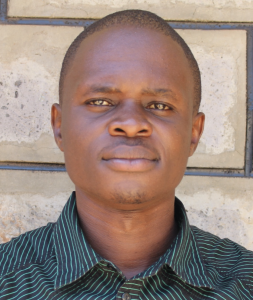Located in the environs of Western Kenya, Shianda village is surrounded by sugarcane plantations as they are the primary source of commercial activity in the area. The community has a rural set-up, with a majority of the houses being semi-permanent and grass-thatched. A few homes are connected to electricity. The roads leading here are in good condition, allowing community members to access the town center.
350 people in Shianda depend on Mukeya Spring for water, though it is unprotected and its water, consequently, contaminated. Fetching water from the unprotected spring is difficult due to its poor access area and lack of a discharge pipe. We found a large crowd ready to fetch water during our visit at the spring for this report. But without an efficient way to fetch water, people were left scrambling at the water point leading to time wastage and even injuries in their squabbles. The time wastage is so bad that children, who traditionally must wait for adults to collect water first, often miss school entirely because they are stuck at the end of the water line.
The area leading up to the spring is slick with mud. Community members must step into the shallow pool of water that forms below the main access area to the spring, sinking into the mud while they wait. Two improvised discharge pipes exist at the spring; one is an old plastic container cut into an open halfpipe, while the other is a small metal pipe. Both are lodged directly into the earth where the spring's water comes to the surface, but the metal pipe is so low community members cannot even fit their jerrycans beneath it. It also captures a minimal amount of water.
The tricky access area worsens during the frequent and heavy rains, sometimes leading to injuries as people try to leave the waterpoint.
"This water point is the main source of our water. Though serving a large population, it has got its own challenges. Accessing the spring has been a challenge to me, especially when it rains. I have once broken my leg while searching for this precious commodity, forcing me to stay home for a long time nursing my injuries. This really affected my business," said Ruth Mmasi, a 44-year-old businessperson in the community.
Most community members choose to fill their containers using the piece of cut plastic as a spout. The plastic is dirty with algae and settled soil and sand, and it misses a lot of the spring's natural yield. This slows people down as they fetch water, thus leading to the frustrated crowds we witnessed. The more time spent at the spring each day means less time for farming, house chores, going to work, and child care.
Because the spring is open, rainwater seeps into the ground and mixes with the spring water. This runoff carries farm chemicals, animal waste, and extra soil directly into the drinking water. Community members report frequent cases of typhoid and cholera related to the condition of the spring. Families lose many financial resources trying to pay for the medication and hospital visits these waterborne illnesses require. Adults also miss out on their productive time while kids have to stay home from school, falling behind in their studies.
Currently, the community is trying to observe proper hygiene and sanitation standards. But they are not able to meet those standards without a sufficient supply of clean water. Sometimes, tasks like washing dishes, laundry, general household cleaning, and even handwashing are sacrificed because women cannot waste any more of their day at the spring.
"As a small child, I am forced to recycle my clothes at least twice; that is when my mother is now able to give me another set of clean clothes to put on," said young primary school-aged student Purity.
What We Can Do:
Spring Protection
Protecting the spring will help provide access to cleaner and safer water and reduce the time people have to spend to fetch it. Construction will keep surface runoff and other contaminants out of the water. With the community’s high involvement in the process, there should be a good sense of responsibility and ownership for the new clean water source.
Fetching water is a task predominantly carried out by women and young girls. Therefore, protecting the spring and offering training and support will help empower the female members of the community by freeing up more of their time and energy to engage and invest in income-generating activities and their education.
Training on Health, Hygiene, COVID-19, and More
To hold training during the pandemic, we work closely with both community leaders and the local government to approve small groups to attend training. We ask community leaders to invite a select yet representative group of people to attend training, which will then act as ambassadors to the rest of the community to share what they learn. We also communicate our expectations of physical distancing and wearing masks for all who choose to attend.
The training will focus on improved hygiene, health, and sanitation habits in this community. We will also have a dedicated session on COVID-19 symptoms, transmission routes, and prevention best practices.
With the community’s input, we will identify key leverage points to alter their practices at the personal, household, and community levels to affect change. This training will help to ensure participants have the knowledge they need about healthy practices and their importance to make the most of their water point as soon as the water is flowing.
Our team of facilitators will use a variety of methods to train community members. Some of these methods include participatory hygiene and sanitation transformation, asset-based community development, group discussions, handouts, and demonstrations at the spring.
One of the most important issues we plan to cover is handling, storing, and treating water. Having a clean water source will be extremely helpful, but it is useless if water gets contaminated by the time it is consumed. The community and we strongly believe that all of these components will work together to improve living standards here, which will help to unlock the potential for these community members to live better, healthier lives.
We will then conduct a small series of follow-up training before transitioning to our regularly scheduled support visits throughout the year.
Training will result in the formation of a water user committee, elected by their peers, that will oversee the spring's operations and maintenance. The committee will enforce proper behavior around the spring and delegate tasks that will help preserve the site, such as building a fence and digging proper drainage channels. The fence will keep out destructive animals and unwanted waste, and the drainage will keep the area’s mosquito population at a minimum.

 Protected Spring
Protected Spring
 Rehabilitation Project
Rehabilitation Project










































